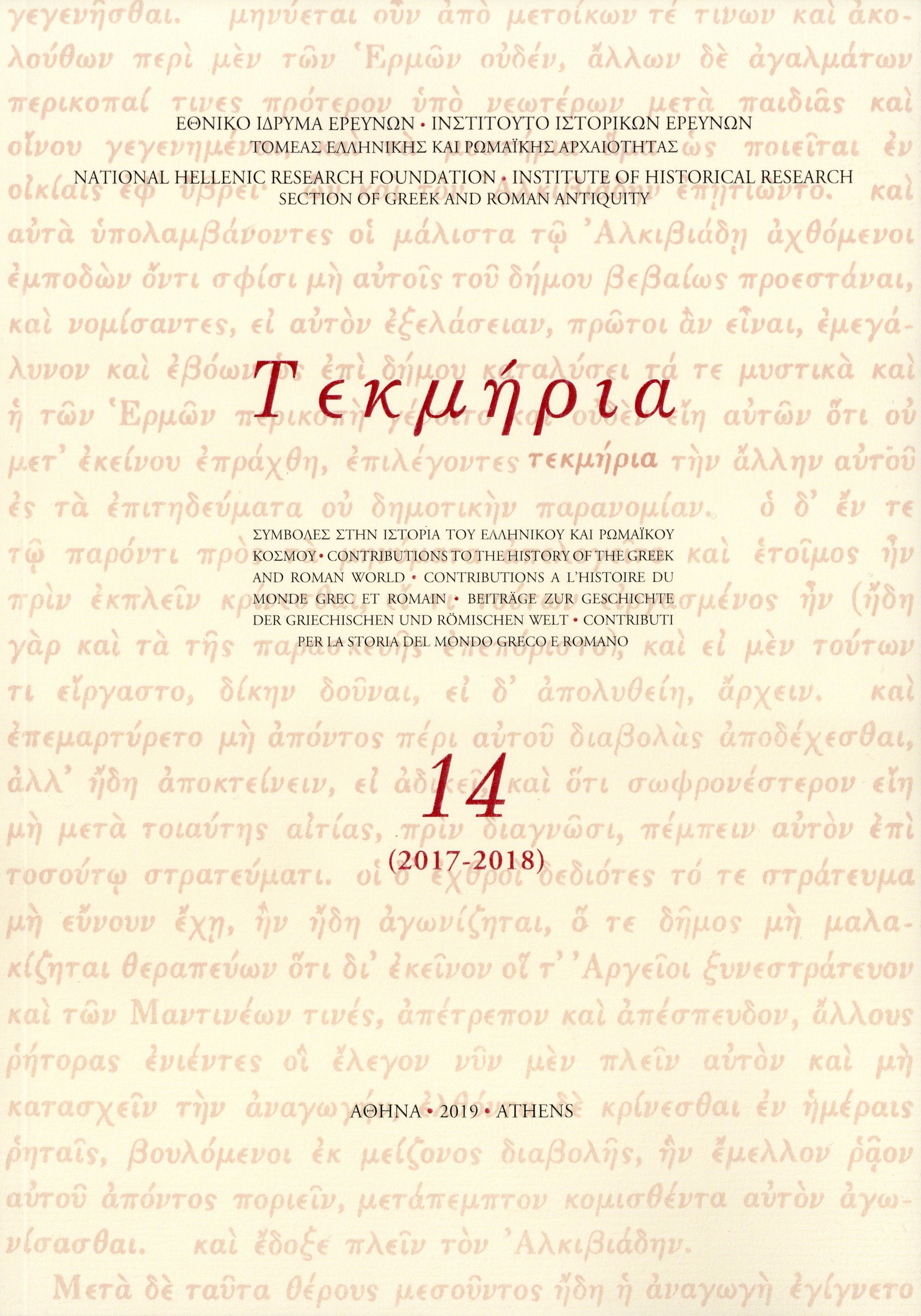Re-discovered and new grave inscriptions from the necropoleis of Assos, Part I
Περίληψη
This article presents 16 grave inscriptions from Assos in the Troad, dating between the fifth century BC and the end of the second century BC. Thirteen of these inscriptions were discovered between 1981 and 2005 and 3 were found in the third excavation term (2006-ongoing).Two of the inscriptions discovered between 1989 and 1994 are mentioned in R. Stupperich’s excavation reports and all but two are printed in majuscules in J.Freydank’s doctoral dissertation (published 2000). None, however, have been the subject of a comprehensive evaluation. From the dialectal point of view, these inscriptions greatly contribute to the epigraphic corpus of Assos. The composition of the inscriptions that display specific features of the Lesbian dialect is unremarkable in most cases; they usually consist only of the deceased’s name in the nominative case, while in five cases a patronymic follows in the genitive. Nevertheless, two inscriptions are remarkable since they document for the first time the use of an adjective of possession in the Lesbian dialect. In addition, these inscriptions add several new names to the onomastic repertoire of Assos and Asia Minor: Eratophanes, Simmeia, Aigidaia, Phaeia, Amphereidaia/Ampheridaia, Kleotthis, Oligidas, Agasikles, Nikasis, Sphodrias, Agias, Soter, Kydrantha, Isodikos, Euandros, Sosigenes, Phileia, Zoila, Sotadas, Peristera, [..]stratidas, Anaxagoras, and Mikkylos.
Λεπτομέρειες άρθρου
- Πώς να δημιουργήσετε Αναφορές
-
Özhan, T. (2021). Re-discovered and new grave inscriptions from the necropoleis of Assos, Part I. Τεκμήρια, 16, 69–107. https://doi.org/10.12681/tekmeria.28452
- Τεύχος
- Τόμ. 16: (2021-2022)
- Ενότητα
- Άρθρα

Αυτή η εργασία είναι αδειοδοτημένη υπό το CC Αναφορά Δημιουργού – Μη Εμπορική Χρήση – Παρόμοια Διανομή 4.0.
Οι συγγραφείς των άρθρων που δημοσιεύονται στα Τεκμήρια διατηρούν τα δικαιώματα πνευματικής ιδιοκτησίας επί των άρθρων τους, παραχωρώντας στο περιοδικό το δικαίωμα της πρώτης δημοσίευσης. Άρθρα που δημοσιεύονται στα Τεκμήρια μπορούν να χρησιμοποιούνται ελεύθερα για μη κερδοσκοπικούς σκοπούς, χωρίς δικαίωμα τροποποίησης (δημιουργία παράγωγου έργου), με αναφορά στο συγγραφέα και στην πρώτη δημοσίευση. Το Εθνικό Ίδρυμα Ερευνών διατηρεί το δικαίωμα να δημοσιεύει, να αναπαράγει, να παρουσιάζει στο κοινό, να διανέμει και να χρησιμοποιεί άρθρα που δημοσιεύονται στα Τεκμήρια σε οποιοδήποτε μέσο και μορφή, είτε μεμονωμένα είτε ως μέρη συλλογικών έργων, για όλο το χρόνο διάρκειας προστασίας της πνευματικής ιδιοκτησίας και για όλες τις χώρες του κόσμου. Αυτό περιλαμβάνει, ενδεικτικά και όχι αποκλειστικά, το δικαίωμα δημοσίευσης των άρθρων σε τεύχη του περιοδικού Τεκμήρια, αναπαραγωγής και διανομής μεμονωμένων αντιγράφων των άρθρων, αναπαραγωγής ολόκληρων των άρθρων σε άλλη έκδοση του ΕΙΕ, και αναπαραγωγής και διανομής των άρθρων ή της περίληψης τους με χρήση πληροφορικού συστήματος αποθετηρίου.




